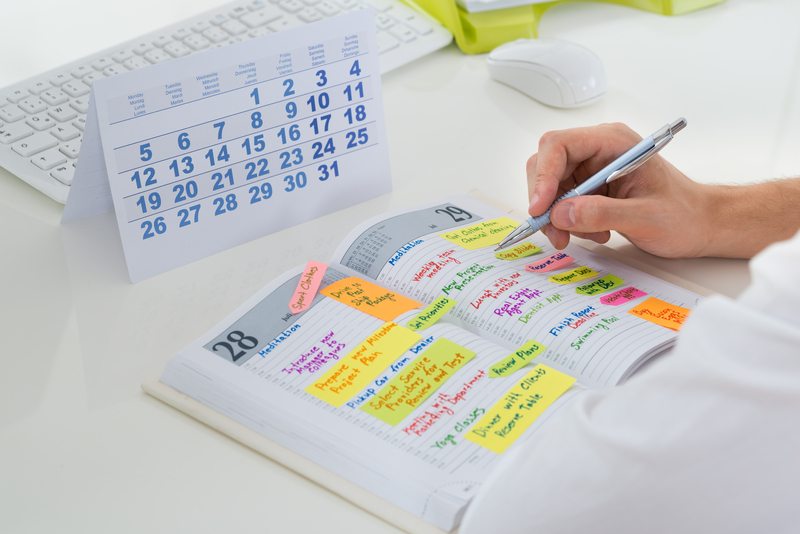How to Safely Lift Heavy Objects on Your Own
Posted on 08/06/2025
How to Safely Lift Heavy Objects on Your Own
Whether you're rearranging your furniture, moving into a new apartment, or working on a DIY project, knowing how to safely lift heavy objects on your own is crucial. Improper lifting can lead to serious injuries, including muscle strains, sprains, and long-term back problems. By learning safe lifting techniques and understanding the mechanics involved, you can not only protect yourself but also make the task much easier and more efficient.

Why Safe Lifting of Heavy Objects Matters
Lifting heavy items improperly is one of the leading causes of workplace and household injuries. According to the Occupational Safety and Health Administration (OSHA), thousands of people are injured each year due to poor manual handling techniques. Protecting your back and joints by using proper lifting methods is essential for short- and long-term health. Let's explore the key reasons why safe lifting is vital:
- Prevents Injuries: Minimizes the risk of back strains, hernias, and joint injuries.
- Protects Long-Term Health: Reduces wear and tear on muscles and joints over time.
- Improves Efficiency: Allows you to move heavy items with greater ease and less fatigue.
- Promotes Independence: Enables you to handle lifting tasks without waiting for help.
Essential Preparation Before Lifting
Before attempting to lift a heavy object on your own, take time to prepare properly. A few minutes of preparation can make all the difference between a safe lift and a painful accident.
1. Assess the Object
- Weight: Is the object within your safe lifting capacity? Most people should avoid lifting more than 25% of their body weight alone.
- Shape & Size: Is the item awkward or bulky? Bulky objects require different handling than compact ones.
- Material: Can the object be securely gripped, or is it slippery/fragile?
- Balance: Is its weight distributed evenly, or is it lopsided?
2. Clear the Path
Remove obstacles and ensure you have a direct route to your destination. Tripping hazards are one of the leading causes of lifting injuries.
3. Plan the Move
- Visualize the lift, transport, and placement of the object.
- If necessary, set up a resting point along the path.
- Inform household members or colleagues that you'll be moving a heavy item.
4. Wear Appropriate Gear
- Footwear: Wear shoes with non-slip soles and closed toes.
- Gloves: If the object is abrasive or slippery, wear work gloves for a better grip.
- Clothing: Choose flexible, well-fitted clothes that don't restrict movement or pose tripping hazards.
Step-by-Step Guide: How to Lift Heavy Items Safely Alone
Using the correct lifting technique is essential--especially when working alone. Follow these steps for safe lifting of heavy loads:
Step 1: Position Your Body Correctly
- Stand as close to the object as possible.
- Place your feet shoulder-width apart for a sturdy base.
- Point one foot slightly ahead of the other for extra balance.
Step 2: Get a Firm Grip
Squat down by bending your hips and knees--not your back. Keep your back straight, chest out, and your gaze forward. Grip the object securely with both hands.
Step 3: Lift with Your Legs
- Engage your core muscles.
- Push up with your legs and glutes, keeping the object close to your body.
- Do not use your back to lift. Your spine should stay straight during the lift.
Step 4: Maintain Proper Posture
Hold the object as close to your body as possible, ideally at waist height. Keep your back straight and avoid twisting or turning while lifting or carrying. If you need to pivot, turn with your feet--not your torso.
Step 5: Set Down the Object Safely
- Squat down gently by bending your knees and hips.
- Keep your back straight and place the object down with control.
- Release your grip only when the object is securely on the ground or surface.
Top Tips for Lifting Heavy Items Alone
- Test the Weight: Before fully committing, test-lift one edge of the object to judge if you can handle the full weight alone.
- Divide and Conquer: If possible, break down the item into smaller pieces or remove drawers, shelves, or loose contents.
- Slide Instead of Carry: Use blankets, towels, or furniture sliders to move objects across the floor when carrying isn't feasible.
- Get Leverage: Leverage tools minimize effort and maximize safety.
Tools and Equipment That Can Help
When you're alone, using proper lifting aids and equipment can make a huge difference. Here are some helpful tools designed for moving heavy objects solo:
- Furniture Sliders: These allow you to slide furniture or appliances over hard floors and carpets with ease.
- Dollies and Hand Trucks: Ideal for moving boxes, appliances, and furniture safely and efficiently.
- Lifting Straps or Forearm Forklifts: These straps distribute the weight across your body for safer lifting and carrying.
- Ramps: Perfect for wheeling heavy items up stairs or over curbs.
- Pry Bars and Levers: For lifting one side of heavy items to insert sliders or get a secure grip.
Body Mechanics: Techniques for Lifting Heavy Objects Without Injury
Proper mechanics are at the heart of safe heavy lifting. Here's a deeper look at the essential body mechanics that will keep you safe:
- Keep it Close: The farther an object is from your body, the greater the strain on your spine. Always keep heavy items as close as possible to your torso during lifting and carrying.
- Maintain Natural Curves: Your spine should remain in its natural S-shape. Do not round your back, which can cause herniated discs.
- Engage Core Muscles: Tighten your abdominal muscles as you lift; this helps support your back and prevents injury.
- Feet Positioning: Wide stance and one foot slightly ahead help you maintain balance and stability.
- Don't Rush: Taking your time reduces the risk of injury. Move slowly and deliberately.
What to Avoid When Lifting Heavy Objects Alone
Many common mistakes can be easily avoided if you're aware of them. Here are key things you should not do when lifting heavy objects by yourself:
- Avoid Twisting: Twisting is a leading cause of back injuries. Pivot your feet, not your waist, if you need to turn.
- No Jerking Movements: Sudden motions can strain muscles and destabilize the load.
- Don't Overreach: Lifting an object from above your shoulders or far in front of you increases risk. Bring it closer or lower before lifting.
- Don't Ignore Pain: If you feel pain or excessive strain, stop immediately and reassess the task.
- Never Be Afraid to Ask for Help: If an object is too heavy or awkward, get assistance. There's no shame in prioritizing safety.
Special Considerations for Different Types of Heavy Objects
Large Furniture (Couches, Dressers, Tables)
- Disassemble whenever possible.
- Empty all drawers and removable elements.
- Tip the item on its side or back to maneuver tight spaces.
Appliances (Washers, Refrigerators, Ovens)
- Secure cords and doors to prevent tripping or accidental opening.
- Use an appliance dolly and move gradually, in small increments.
Boxes and Bins
- Test weight first.
- Be cautious of shifting contents. Tape closed and keep upright.
- Grip from the bottom for stability.

How to Train Your Body for Heavy Lifting
Regular strength and flexibility training can significantly improve your ability to lift heavy objects safely. Here are some key exercises that target essential muscle groups:
- Squats: Build leg and glute strength.
- Deadlifts: Enhance hip, leg, and lower back power.
- Planks and Core Work: Improve overall body stability.
- Rows and Grip Strengthening: Strengthen pulling muscles and enhance your grip.
- Stretching and Mobility Work: Increases flexibility and reduces injury risk.
If you have any medical conditions or a history of back injuries, consult with a healthcare professional or physical therapist before performing heavy lifts or starting new exercises.
Wrap-Up: Staying Safe While Lifting Heavy Objects Alone
By following these best practices for safely lifting heavy loads alone, you greatly reduce your risk of injury and make challenging tasks more manageable. Always assess the situation, plan ahead, use the right equipment, and never hesitate to get help if needed. Remember: the safest lift is the one you don't do by yourself if there's any doubt about your ability.
Quick Safety Checklist for Solo Lifting
- Assess the object's weight and shape.
- Plan your route and clear obstacles.
- Use proper body mechanics and lift with your legs.
- Keep the object close, avoid twisting and rushing.
- Use lifting aids or break down the load if possible.
- Listen to your body; stop immediately if you feel pain.
By prioritizing safety and using these guidelines, you can continue your tasks efficiently and protect your health for the long run. Remember: lifting heavy items safely is a skill worth mastering!







